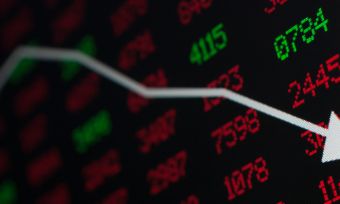Author: Marissa Hayden
What is a managed fund?
A managed fund is when your investment, along with others, is pooled together and invested in a range of assets. This hand-grouped pool of investments is managed by a fund manager, who manages the fund so it remains in line with a certain goal or strategy.
The fund manager buys and sells assets on behalf of the investors using the pooled together funds.
How to choose a managed fund
1. Risk
Before choosing an investment fund, you should know what your risk profile is. There are different funds to suit the different risk tolerance levels of investors.
Very broadly speaking, here are four common risk profiles:
- Conservative: Low risk. A conservative investor primarily seeks to minimise the risk and loss of their accumulated wealth. This investor is comfortable accepting lower returns for a higher degree of stability
- Balanced: Medium risk. A balanced investor seeks to reduce risks and enhance returns equally. This investor is willing to accept modest risks to seek higher long-term returns
- Growth: High risk. A growth investor values higher long-term returns and is willing to accept considerable risk. This investor is comfortable and willing to endure short-term fluctuations and/or losses in exchange for the potential of higher long-term returns
- High Growth/Aggressive: Very high risk. An aggressive investor values maximising returns and is willing to accept substantial risk. This investor may endure extensive volatility and significant losses in the hope of maximising long-term returns
The investment strategy chosen should align to an individual’s investment objectives, risk tolerance, and investment horizon.
A multi-sector fund will often offer investment options that are labelled according to the relevant risk profile, e.g. “Balanced Fund”. However, you cannot assume that two funds with the same name offered by different companies will be equal.
Company A’s growth fund may have a great difference in asset allocation compared to Company B’s growth fund, which will impact the risk and/or returns associated with your investment in one or the other.
For example, Company A’s growth fund may have an allocation of 80% towards growth assets while Company B’s growth fund has 61%.
There are many managed funds available, so it’s important to choose a fund that reflects your risk tolerance, investment time frame, and interest.
Conduct in-depth research into the constructs of a fund to understand its objectives, strategy, and asset allocation so you can be comfortable with your investment.
→Related article: Hatch: New Zealand’s Favourite Online Share Trading Platform
2. Which type of managed fund?
There are many options out there, and narrowing it down by type can help you make a decision. Here are some examples of the different types of investment funds:
Actively managed funds
Actively managed funds are run by a fund manager who frequently buys and sells securities, depending on their performance. The fund managers aim to outperform their relevant benchmark index but, of course, this isn’t always the case.
For example, an actively managed fund may aim to outperform the NZX 50 index.
Passively managed funds
Passively managed funds, such as index funds, do not require a portfolio manager to regularly trade the assets within the fund. They simply track an index, such as the S&P/NZX 50, and use computers to make trades to match its movements.
Ethical investment funds
Investment funds comprising of assets that complement a particular moral, health or political view are known as ethical investment (also called socially responsible investing). Choosing ethical investments is a growing trend, as more investors want to ensure their money is not funding activities that go against their personal values.
Are you worried about what companies your fund invests in on your behalf? Ethical investment funds can “screen in” companies that actively invest in sustainable activities, like healthcare or green energy, and “screen out” companies that invest in tobacco, for example.
Ethical investments can come in both actively managed and passively managed forms.
Compare online share trading platforms
3. Asset class
Another thing you should consider is what asset class you want your managed fund investing in. You can choose a fund that specialises in the asset class of your choice, or you can diversify your risk by going for a multi-sector fund that invests in multiple asset classes at once.
Managed funds can invest in a variety of different asset classes, and these different assets have varying levels of risk and return.
Some examples of common managed fund investment classes are outlined below, but keep in mind that there are many different combinations of each:
- Shares (a.k.a. equities) such as options or shares on the New Zealand stock market or global stock markets
- Cash securities (a.k.a. cash management trusts) such as bank deposits, bills of exchange, promissory notes
- Property such as residential properties, industrial, retail or commercial real estate
- Fixed interest investments (a.k.a. fixed-income investments) such as bonds
Furthermore, some funds only focus on a specific category within an asset class. For example, even a managed fund that invests solely in shares may choose to invest only in NZ shares. Or even shares of socially responsible companies involved in a specific industry, such as water.
4. Fees and costs
When comparing investment funds, one of the main things you should look at are the different fees and costs of each one. These can take a significant chunk out of any returns you might make, so thoroughly take them into account before making your choice, to ensure you’re getting the best value for money.
Common fees and costs that apply to different managed funds may include:
- Buy/sell spread: This refers to the transaction cost you pay every time you buy or sell units in a fund. The buy/sell spread is the difference between the entry (buy) and exit (sell) prices of the fund. It is charged as a percentage of the value of the trade and is designed to cover costs for the fund such as brokerage and government taxes
- Management expense ratio (MER): To pay for the costs of managing and operating the fund, investors are charged management fees through the fund’s MER. This ratio is the percentage of the amount invested in the fund that has to go towards paying these costs each year
- Performance fee: A performance fee may be charged by the fund on investment profits made through the fund
- Administration fee: The administration fee is an additional ongoing fee that some funds list separately from the management fee
- Termination fees: A fee charged for closing your account, over and above the sell spread. This is charged when you choose to sell your investment units and leave the managed investment pool. Not all managed funds charge this fee
5. Withdrawal process
When investing, it’s always important to have an exit strategy in mind. You don’t want your funds frozen in an investment that you’re no longer happy with – especially if it’s plunging in value.
As such, you need to fully understand the withdrawal process of the investment funds you’re considering before making the decision to invest your money.
Unlisted funds can be frozen to withdrawal requests if a lot of investors choose to withdraw around the same time, such as in periods of significant downturn. This is because some funds do not have enough cash available, since most of the funds might be in assets such as property and shares.
During these times, the fund might provide other ways to withdraw, such as through withdrawal offers and hardship relief.
6. Long-term performance
Past performance is no indication of future performance, and it’s best not to rely on this as your sole reason for choosing a managed fund. A fund can achieve over 20% growth in one year, and then suffer losses in the next. However, the long-term performance of a fund is worth considering. After all, achieving growth is the whole point of investing.
7. Other features, terms and conditions
Some other fund features that you should consider include:
- Product Conditions: Minimum investment required, minimum additional investments, minimum withdrawal amount, availability of regular investment plan and availability of different payment methods
- Investor Access: Can you invest quickly through an online share trading platform? Or do you have to go through the fund provider directly? Online or phone access to check balance, statements, or update personal details; ability to make buy and sell requests online or by phone; ability to check fund performance online and availability of call centre for support
- Distributions: Frequency of fund distributions (weekly, monthly, quarterly) and availability of reinvestment plan
- Fees and Rebates: Number of free switches per year, a switching fee, termination fees, performance fees and availability of fee rebates or discounts
Compare online share trading platforms

About the reviewer of this page
This report was reviewed by Canstar Content Producer, Andrew Broadley. Andrew is an experienced writer with a wide range of industry experience. Starting out, he cut his teeth working as a writer for print and online magazines, and he has worked in both journalism and editorial roles. His content has covered lifestyle and culture, marketing and, more recently, finance for Canstar.
Enjoy reading this article?
You can like us on Facebook and get social, or sign up to receive more news like this straight to your inbox.
By subscribing you agree to the Canstar Privacy Policy




Share this article